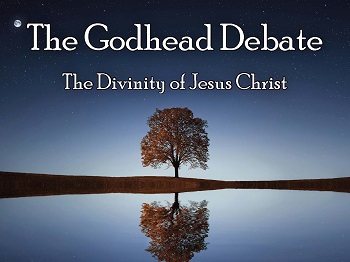The Sanctuary and its relevance for us today
I recently posted an article on christianity.stackexchange.com where someone asked what differences are there between 7th Day Adventists and other Denominations. Wanted to share this with you. What do you think about it?
If one wants to point to a specific doctrine which lays at the root of Seventh Day Adventism and which also makes us different to other denominations, it would not be the Sabbath, the State of the Dead, the Spirit of Prophecy, Jesus second coming or our understanding of the personality of the Father and the Son, but it would be the Sanctuary and our understanding of what it stands for.
First, there were two Sanctuaries: one always in heaven, and the second at some points in the jewish history here on earth (either as the sanctuary in the wilderness or the Temple in Jerusalem). The earthly was meant to be a shadow of the heavenly one. Also the ministry in the temple as well as the temple itself was designed to show several aspects of the "Christian" life expressed as a shadow, and explain how thinks work out in the plan of salvation.
Let me explain in more detail: Christianity today is a little vague on the topic of how salvation works and what consequences arise out of it. The old problem between: salvation by works or salvation by grace. Which one is it? Or is it neither? You can find the answer when you look at the old testament sanctuary service which explains the way God want's us to walk if we finally want to come back into his presence (which was to be found in the most holy compartment). There are six steps which separate man from God We can walk these six steps if we want to. These six steps are represented by the six articles of furniture in the Sanctuary.
These six steps are based on the righteousness of Christ which he demonstrated and perfected in his human life and death at the cross. This is his righteousness and our salvation by grace. We cannot add anything to that. And this is represented by the outer wall of the sanctuary and the ONE door through all who wanted to enter into the sanctuary had to walk through. Likewise Jesus is the only ONE door through which we can enter back into the presence of God. And when we have done this, when we have accepted the righteousness of Christ as our own, six steps will follow back to the presence of God. But don't worry, there is no works involved. Watch and see:
First Step: Altar of Sacrifice In the Sanctuary service a sinner had to come and bring a sacrifice if he performed a sin. Likewise today we have to come to Christ and confess him our sin(s) so he can take them away and forgive us. This also represents laying everything we are and have at his doorstep so he can take it and cleanse it. All of our life has to be given him daily. Remember that in the time of the old Testament a daily sacrifice had to be burned in the evening and the morning.
Second Step: Laver of Water. Another representation of the cleansing was to be taught through the washing which took place at the Laver of Water. Today this is represented by baptism. We not only have to give everything to Christ, lay everything at his doorstep, but also have to die to our old self. This is also symbolized by todays baptism. With Christ we die and with Christ we live.
Third, Fourth and Fifth Step: Daily living. The former two Articles of furniture were found in the outer courts of the Sanctuary. There are three more articles in the inner compartment, called: The Holy Place. Those were the table of shewbread, the altar of burnt offerings and the 7fold Candlestick. Those were particularly connected to the word: Daily. The priest had to check those three daily if everything was alright with them (enough oil in the candlestick, altar of incense burning, fresh bread on the table of shewbread). And those three represent the daily life of the Christian. Eating the Bread, meaning studying Gods word; daily praying to God (incense which represents the prayer of the saints); and daily letting our light shine to others (represented by the Candlestick), meaning sharing with others our faith and giving them the Gospel. Interesting that mission work is considered to be a daily activity, right?
Sixth Step: Ark of the Covenant / Mercy Seat. The last article of furniture can be found in the Most Holy Place. This is where God is present on his Throne, the Ark of the Covenant on which lay the Mercy Seat. The first five steps lead up to this last step which is entering the presence of a Holy God. This was only possible for men who were cleansed of sin. The High Priest only could have entered there for the yearly services when he was cleansed from all sin. As to what those sins are, we can find them on the two tables found within the Ark: the 10 Commandments. Those commandments show as to what is sin and what righteousness is and what men has to be cleansed from and how he shall live henceforth (covered with the righteousness of Christ, acting as Christ did). So here turns the wheel back to the beginning to the Altar of Sacrifice where we have to confess our sins to God - which we only learn as to what they are, if we enter into the presence of God and learn it from his law. Those 10 are an expression of what Jesus summarized in the two basic commandments: Love God and thy neighbor as you love yourself. This will be the final outcome if one walks these six steps - daily.
1Joh 3,4: "Whosoever committeth sin transgresseth also the law: for sin is the transgression of the law." Rom 3,23.24.28.31: "23 For all have sinned, and come short of the glory of God; 24 Being justified freely by his grace through the redemption that is in Christ Jesus: 28 Therefore we conclude that a man is justified by faith without the deeds of the law. 31 Do we then make void the law through faith? God forbid: yea, we establish the law." Rom 6,1.2.14.15: "1 What shall we say then? Shall we continue in sin, that grace may abound? 2 God forbid. How shall we, that are dead to sin, live any longer therein? 14 For sin shall not have dominion over you: for ye are not under the law, but under grace. 15 What then? shall we sin, because we are not under the law, but under grace? God forbid. 18 Being then made free from sin, ye became the servants of righteousness." Joh 14,15.21: "15 If ye love me, keep my commandments. 21 He that hath my commandments, and keepeth them, he it is that loveth me: and he that loveth me shall be loved of my Father, and I will love him, and will manifest myself to him." 1Joh 2,3.4: "3 And hereby we do know that we know him, if we keep his commandments. 4 He that saith, I know him, and keepeth not his commandments, is a liar, and the truth is not in him." 1Joh 5,3: "For this is the love of God, that we keep his commandments: and his commandments are not grievous." Rev 14,12: "Here is the patience of the saints: here are they that keep the commandments of God, and the faith of Jesus." Rev 22,14: "Blessed are they that do his commandments, that they may have right to the tree of life, and may enter in through the gates into the city."




